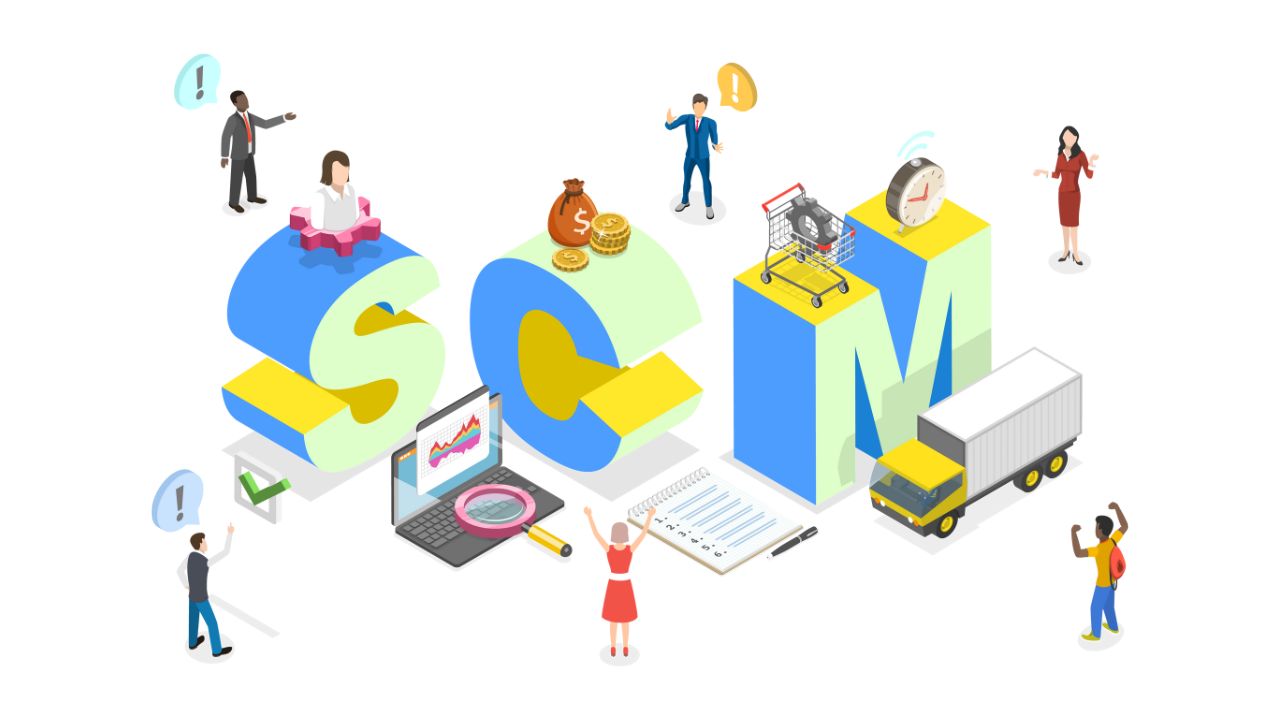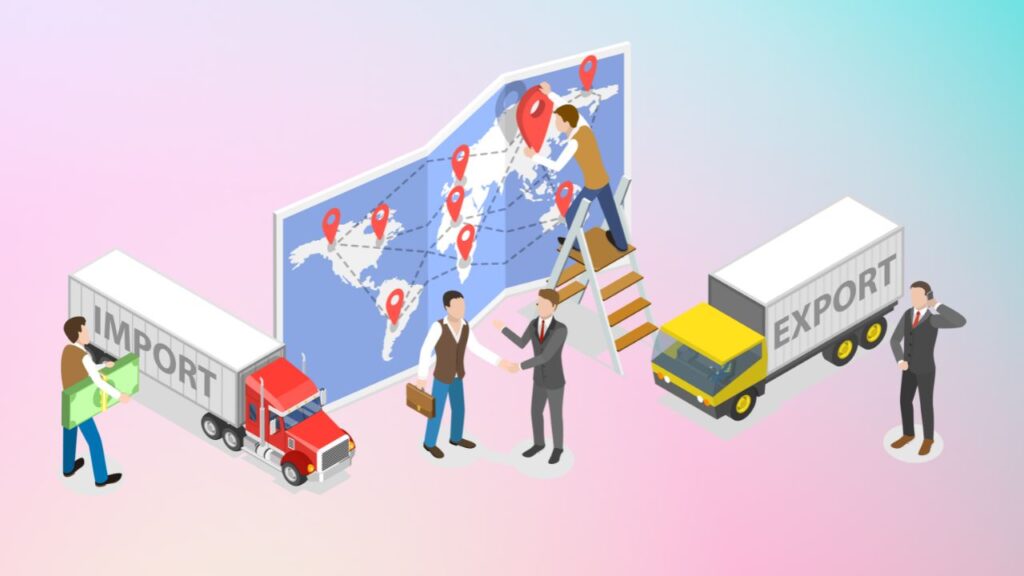Supply chain and its management, a term coined in the 1980s, has now become crucial to businesses worldwide. The process is vital in helping a company grow its products while understanding the needs of its customers. With the help of supply chain management, a company can predict the flow of their product within the market and how much they need to adapt to sell it better.
In this article, we will discuss it along with some supply chain management examples to clarify the point. Without further delay, let’s start our discussion.

| Table of Content |
Part 1. What is Supply Chain Management
Consider one of the supply chain management examples: a brand requires an apparel product. Acquiring the raw material, giving it to the production department to make it, and then delivering the product to the retail store is part of the process. The supply chain makes sure that there are no hiccups during this complete process lifecycle.
Whether arranging the raw materials for the apparel through a network of suppliers or producing it in a factory, it is part of the supply chain process. The three major aspects of the process are development, production, and distribution. The process works smoothly if physical and information flows are adequately managed.
Part 2. How Does Supply Chain Management Work?

The central part of the supply chain is understanding and fulfilling a customer’s needs. As needs and demands change, the process adapts to the customer’s needs.
Following are the five significant steps that constitute an efficient supply chain process.
1. Planning
The first big step is understanding the market and planning accordingly. The plan starts when a company does analytics and develops a course of action to control not only the inventory but also the manufacturing process.
The planner plans how to source the raw material and product. Then, they ensure the manufacturing is done within the plan, allowing the company to deliver the products promptly.
The main backbone of any planning process is to have a vigilant eye that manages the fluctuating demand efficiently using tools and techniques. They make planning easier using an ERP system to make proper Material Requirement Planning.
2. Sourcing
Now that a plan is defined, the company makes sourcing more viable and economical by finding suitable and economical vendors. To ensure quality is delivered, sourcing requires that a supplier meet and fulfill the quality needs.
The lead time is a critical part of source planning, where the perishable and non-perishable products are dealt with differently, avoiding inventory zero as much as possible.
3. Manufacturing
Manufacturing in supply chain management is making a product according to the consumer’s or retailer’s demands. It involves using raw materials to create high-quality products. A typical manufacturing process involves assembling essential components, testing their quality, and finally packing them to deliver them right to the consumer’s doorstep.
4. Delivery
The next step in the supply chain is to ensure the consumer receives the product on time. A company will use different freight methods to deliver the product on time. Most companies will use 3PL companies to ensure the delivery process is streamlined so no product delivery is delayed.
With the increase in customer demand targeting next-day or same-day delivery, companies invest more than 50% of their revenue in logistics. This last leg is most commonly known as last-mile delivery, which involves warehousing and 3PL companies to make the process as smooth as possible.
5. Returns
Supply chain management isn’t complete without the facility of customer returns. Returns can be for any reason, such as a faulty product, the customer not liking it, purchasing something that the customer didn’t require, etc.
Most companies’ primary reason for accepting returns is to enhance customer relationships. However, this isn’t limited to customers; vendors can also get returns. Sometimes, the raw materials weren’t up to par with the requirements that a manufacturer provides.
No matter how streamlined a supply chain process is, allowing customers to make returns is essential to growing a business.
Part 3. Why is Supply Chain Management Important?
The prime purpose of an effective supply chain is to grow profits and keep the customers happy. Based on these two practical goals, the functionality of the supply chain tries to meet these goals. By implementing these features, a good company understands the importance of them. Here are a few key reasons why the supply chain is essential in businesses and consumer demands:

1. Acquiring Basic Necessities
As a consumer, you have the opportunity to get the basics of products like food and clothes. If a product, like tea, isn’t produced in your region, the supply chain ensures it is delivered worldwide.
The same can be said of clothing. An apparel manufacturer can be on another side of the world, but the finished product can come to you through freight, right down to the retailer. You then buy that product directly from the retailer without physically going to the factory.
2. Delivery at the Right Time
Critical things like life-saving drugs, utilities, and food are time-sensitive essentials. You cannot overstock life-saving medicines, as they have a shelf life. They need to pass through the supply chain periodically while maintaining quality.
Food is perishable, and it is crucial to deliver any food item so that it is in your hands while still fresh.
3. Saving Cost
It may cost you a lot to acquire something that fits your needs. However, supply chain processes make regular delivery possible if there is a demand for such a product in your region. The more demand, the better and streamlined the delivery, making it cheaper to bring you those items.
The higher the product demand, the more it will be produced. The supply chain facilitates not just the delivery of raw materials but also the delivery of the end product to the consumer.
Part 4. The Future of Supply Chain Management
The world is going digital, and so is e-commerce. The supply chain partners to any change that a supply chain life cycle requires. Most consumers now order products online and monitor their purchase’s delivery at every step.
With real-time monitoring, supply chain processes have evolved so much that AI and deep machine learning can now provide the optimum delivery mechanism. Tools and software can now give you analytics with consolidated information on improving and streamlining your process.
The more efficient your delivery channel, the more you can save. The savings are not just in getting the cheapest logistics but also in consuming as little fuel as possible.
These methodologies rely on data management and analytics, which provide companies with resources to ensure everything is in order. Now, 3PL companies are more in demand than ever as they use these techniques to ensure streamlined delivery of any product.
Part 5. Simplify Your Supply Chain Management with NextSmartShip
When we talk about the future of supply chains, which can be data-driven 3PL companies, we talk about how these logistic support companies can make delivery affordable. Companies like NextSmartShip can now make your supply chain process fast and inexpensive. They take logistics out of your hands and let you focus on what matters the most: keeping your customers happy.

Here are a few aspects the NextSmartShip excels at:
- Store Integration – No matter which shop platform you use or how many shops you run, your store is integrated with a button click. The process is automatic and simple.
- Seamless Ordering – When your customers order, NextSmartShip acquires, packs, and delivers for smooth fulfillment.
- Inventory Management – NextSmartShip ensures speedy delivery by stocking your inventory in the warehouses nearest your customers.
- Shipping Your Orders—NextSmartShip is now responsible for delivering your products directly from the source to your customers. You do not need to be involved; all you need to do is sit back, relax, and observe.
Conclusion
Supply chain management involves efficiently managing the delivery lifecycle, streamlining the process, and maximizing profits. However, this doesn’t mean quality will be reduced one bit. That is the beauty of supply chains: everything works like integrated gears. As a business or retailer, your primary job is to connect with a professional and experienced 3PL company like NextSmartShip to ensure speedy delivery. On-time delivery is the best option if you get the best rates, whether standard or express shipping. With NextSmartShip, you get the best rates. Visit their website and contact the sales team to discuss how they can better serve you.
